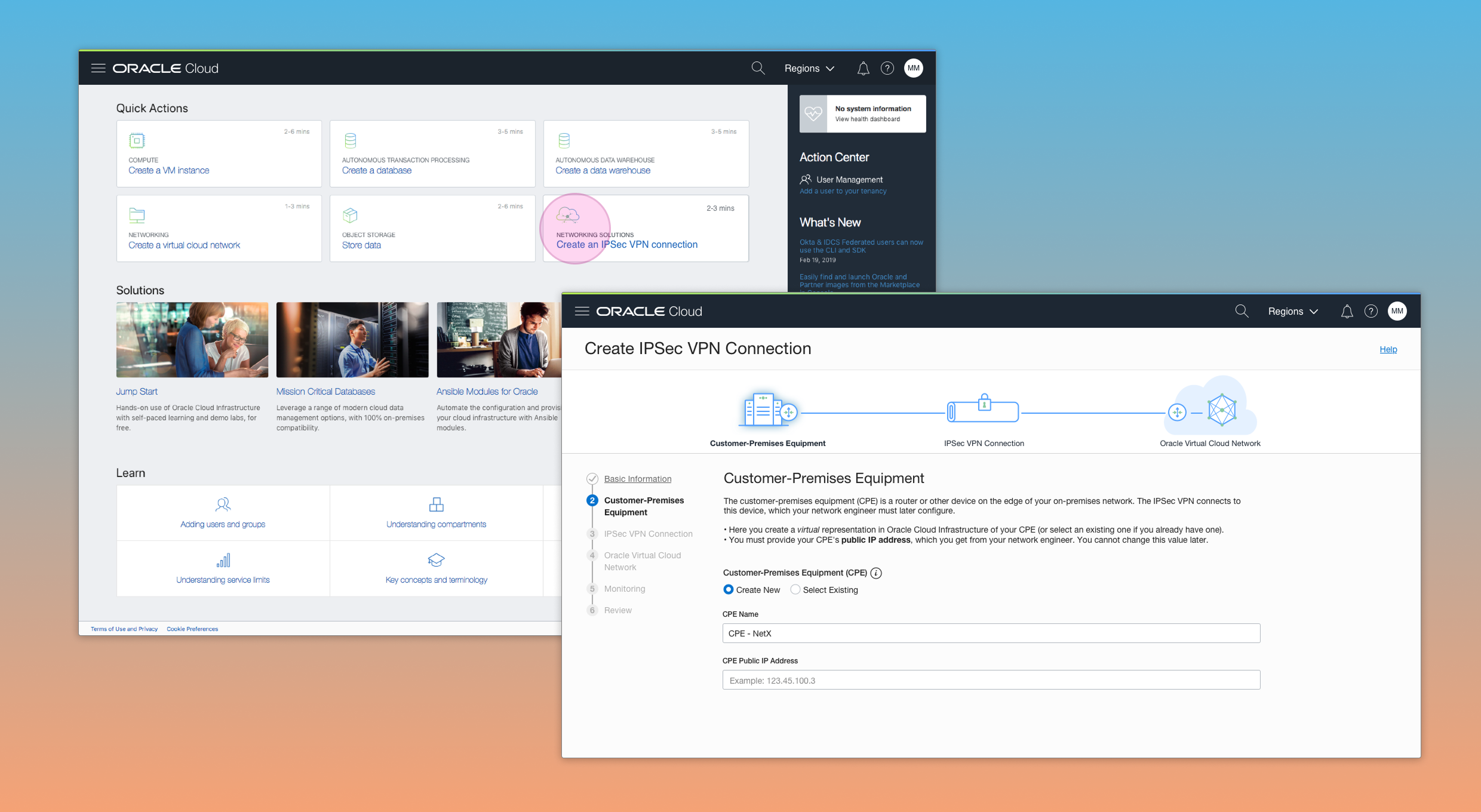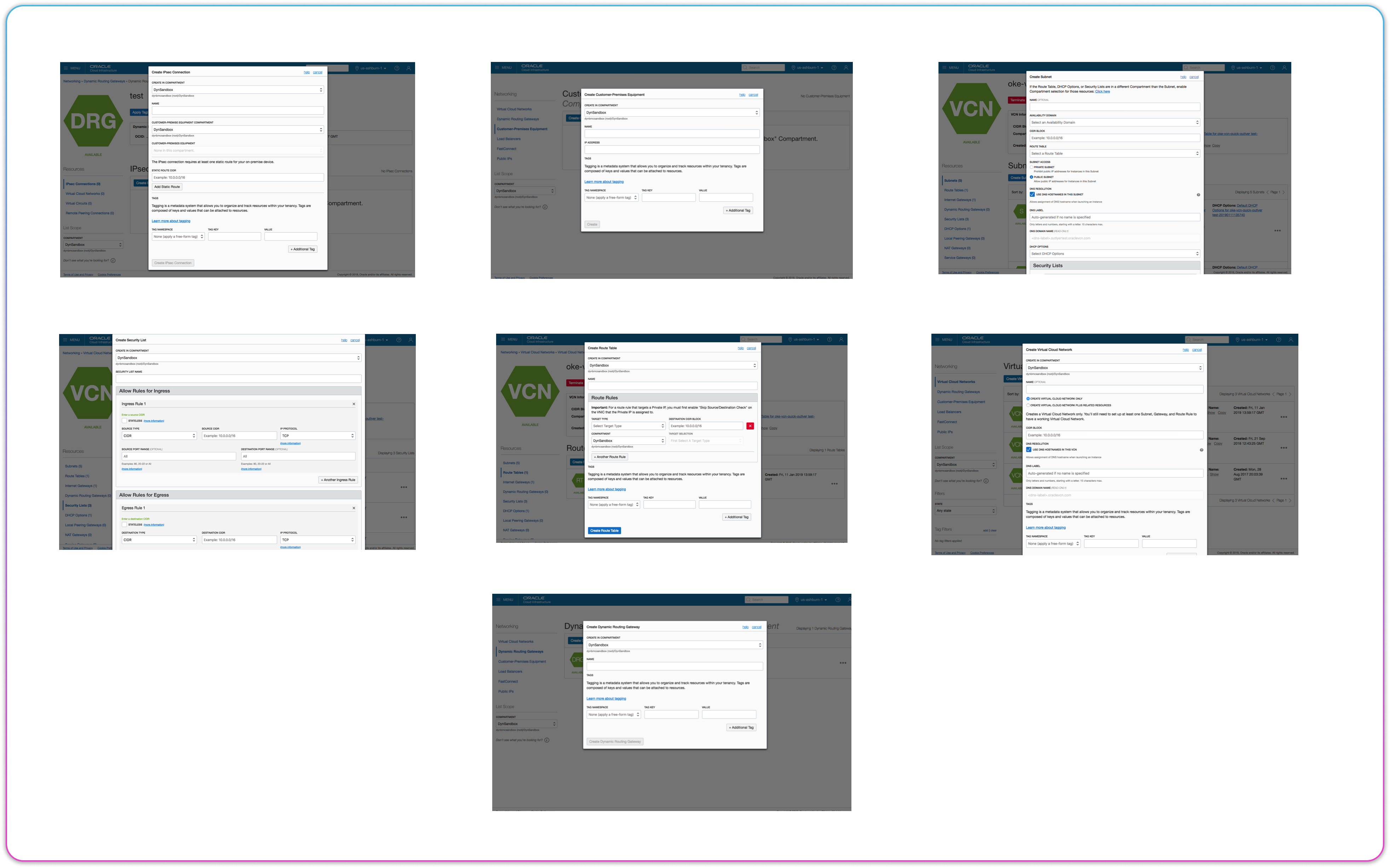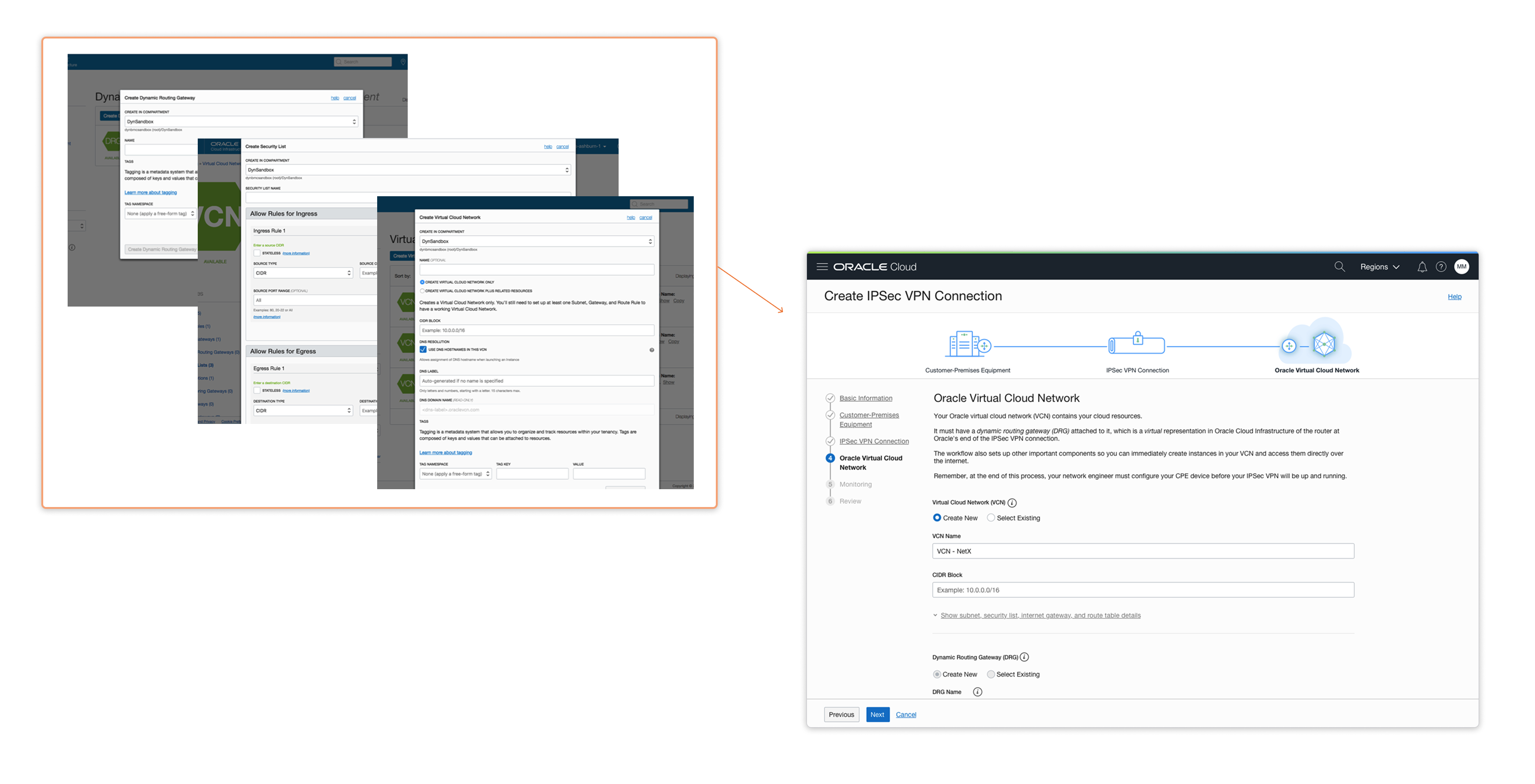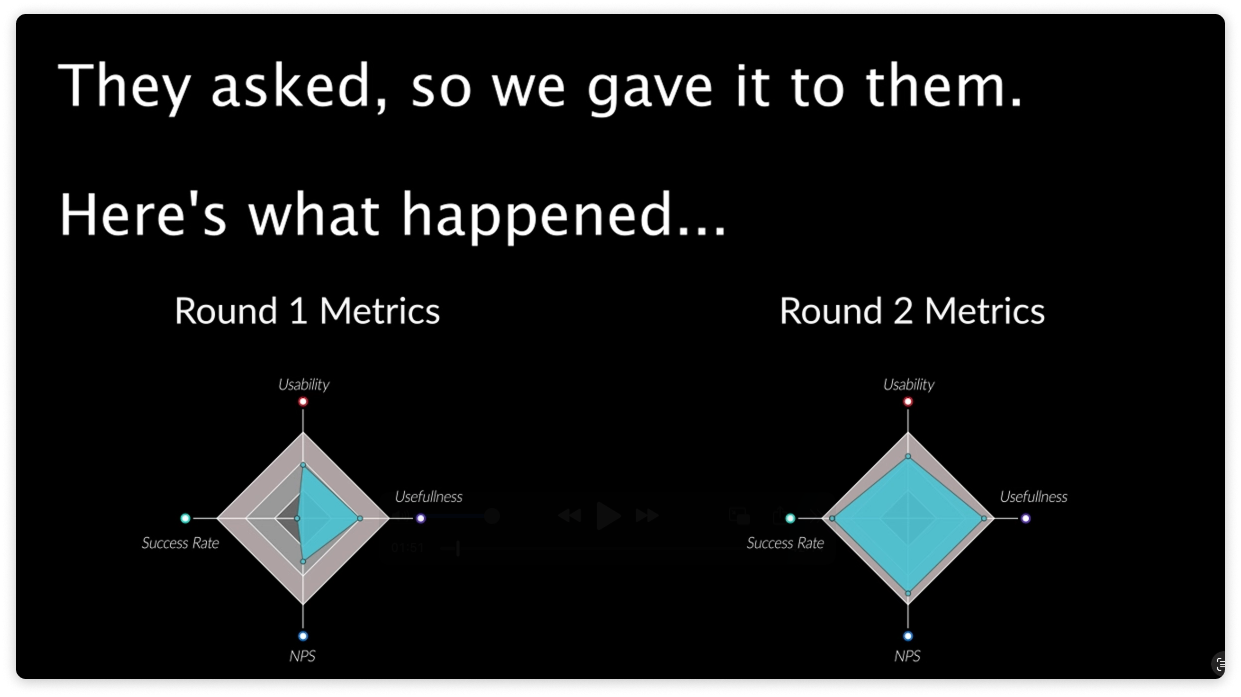Simplifying Cloud Networking with Cross-Service Workflows

Project Summary
I led a design initiative to improve the network connection setup between on-premises data centers and Oracle Cloud Infrastructure (OCI). Baseline usability testing revealed that users were overwhelmingly unsuccessful and frustrated when attempting to complete this critical workflow. I translated those insights into a guided, step-by-step solution that simplified decisions, reduced reliance on documentation and significantly improved success rates.
Results
This program not only improved usability but also set a foundation for expanding cross-service workflows beyond networking into other OCI services.
Skills:
Product Design, UI Design, UX Research
Role:
Lead UX Designer
Team:
Product Managers, Engineers, UX Research, UX Designers across services
User Problem
Customers struggled with configuring networking services due to:
- Fragmented workflows across multiple services (VPN, VCN, FastConnect, DNS, WAF).
- Limited guidance when moving from proof-of-concept to production.
- A lack of visibility into network topology and monitoring across services.
- High reliance on support and documentation rather than intuitive UI flows.
This complexity made it difficult for customers to confidently set up production workloads and slowed adoption of OCI services.
Usability Issues
Disjointed UI flows: Users had to switch between multiple service consoles with inconsistent design patterns.
No holistic view: Missing cross-service topology visualization led to confusion and misconfiguration.
Inefficient troubleshooting: Limited monitoring and health checks across services forced customers to manually stitch together insights.
Steep learning curve: Lack of integrated guidance increased reliance on external support tickets and documentation.
Impact
These challenges caused a high failure rate of customer-led configurations. Delayed onboarding and increased time to production. Frustration and lack of confidence in OCI as a platform compared to competitors like AWS and Azure, who already provided stronger visualization and monitoring. Increased support burden on Oracle service teams.
Solution
Introduced a cross-service workflow framework to unify the networking setup experience:
- Guided Workflow Templates: Predefined templates for key scenarios (e.g., On-prem to OCI via VPN or FastConnect, Securing Internet-Facing Services).
- Topology Visualization: A network diagram illustrating configuration to be built.
- Integrated Monitoring & Troubleshooting: Real-time visibility into performance and health, with guided recommendations for alarms, validation and next steps.

Results and Impact
The redesign of OCI’s network setup flow turned a frustrating, low-success experience into a guided process that users could complete confidently and efficiently. Validation studies showed measurable improvements across all key metrics, reinforcing the impact of research-driven design.
- Success rate increased dramatically from the 7% baseline, allowing customers to complete critical setup tasks independently and reliably.
- Usability scores rose above acceptable thresholds, reflecting a smoother, more intuitive experience that reduced user frustration.
- Reliance on external documentation and support tickets decreased, lowering operational overhead and improving customer satisfaction.
- Clearer task sequencing and terminology boosted user confidence, helping administrators feel in control of complex networking workflows.
- New patterns contributed back into the OCI design system, enabling teams across services to deliver consistent, efficient and scalable designs.
Process
- Baseline usability study: Identified critical pain points, task failures and gaps in user confidence.
- Competitor analysis: Researched industry patterns and best practices for guided workflows.
- Ecosystem audit: Assessed OCI’s existing services and design patterns to align with broader system needs.
- Information architecture refinement: Defined the structure and flow for a step-by-step wizard.
- High-fidelity ideation: Created detailed prototypes exploring interaction, validation and content strategies.
- User testing: Collected feedback on design iterations to validate clarity and usability.
- Follow-up usability study: Measured improvements, confirmed higher success rates and validated impact of the redesign.
Phase One
Discovery - Baseline usability study and competitor analysis
Study setup
Partnering with a UX researcher we ran a live, moderated usability study where participants were asked to set up a hybrid connection between an on-premises data center and OCI. We observed them attempting the task in real time, encouraging think-aloud commentary to capture their decision-making and points of confusion. This format allowed us to directly see where users struggled, how they interpreted terminology, and at what stage they turned to external resources for help.
Key findings
- Extremely low success rate: Only 1 of 7 participants came close to completing the task without assistance, yielding a 7% success rate, the lowest ever observed in testing.
- Dependence on documentation: 6 of 7 participants required the help doc after 15–20 minutes without progress; the last turned to it after 35 minutes.
- Ineffective even with help: With documentation, the success rate improved only to 50%, but still no participant fully completed the task.
- Poor usability score: System scored 63, well below an acceptable experience threshold.
- Desire for guided workflows: 71% of participants explicitly asked for a to complete the hybrid network connection.

Phase Two
Define - Ecosystem audit, Information architecture refinement
Before: Users had to jump across seven different service consoles and forms to connect on-prem devices to OCI, a fragmented, confusing process with no clear starting point.

Created a user flow diagram to iron out the new Information architecture of the guided workflow.

Phase Three
Design and Test - High-fidelity ideation and prototype testing
Guided workflow: Ideated on various layouts that led the users through the correct order. Simplified a 7 service confusing flow into a simple 6 step workflow.
Progressive disclosure: Broke long forms into smaller, manageable steps
Actionable guidance: Inline tips, contextual help and labels aligned with user terminology


Topology Visualization: A network diagram illustrating configuration being built.
Integrated Monitoring & Troubleshooting: Real-time visibility into performance and health, with guided recommendations for alarms, validation and next steps




Phase Four
Validate - Follow-up usability study
When we introduced the guided workflow based on Round 1 feedback, the impact was immediate and measurable:
Key findings
The redesign empowered users to complete hybrid network connections independently, without relying on external documentation. Guided sequencing and smart defaults reduced setup time, while proactive validation and clearer terminology minimized confusion and errors. As a result, support tickets tied to network setup declined as misconfigurations were avoided or easily corrected. Usability scores rose dramatically from the baseline of 63 to well above acceptable thresholds, signaling a more intuitive and reliable experience for OCI customers.

